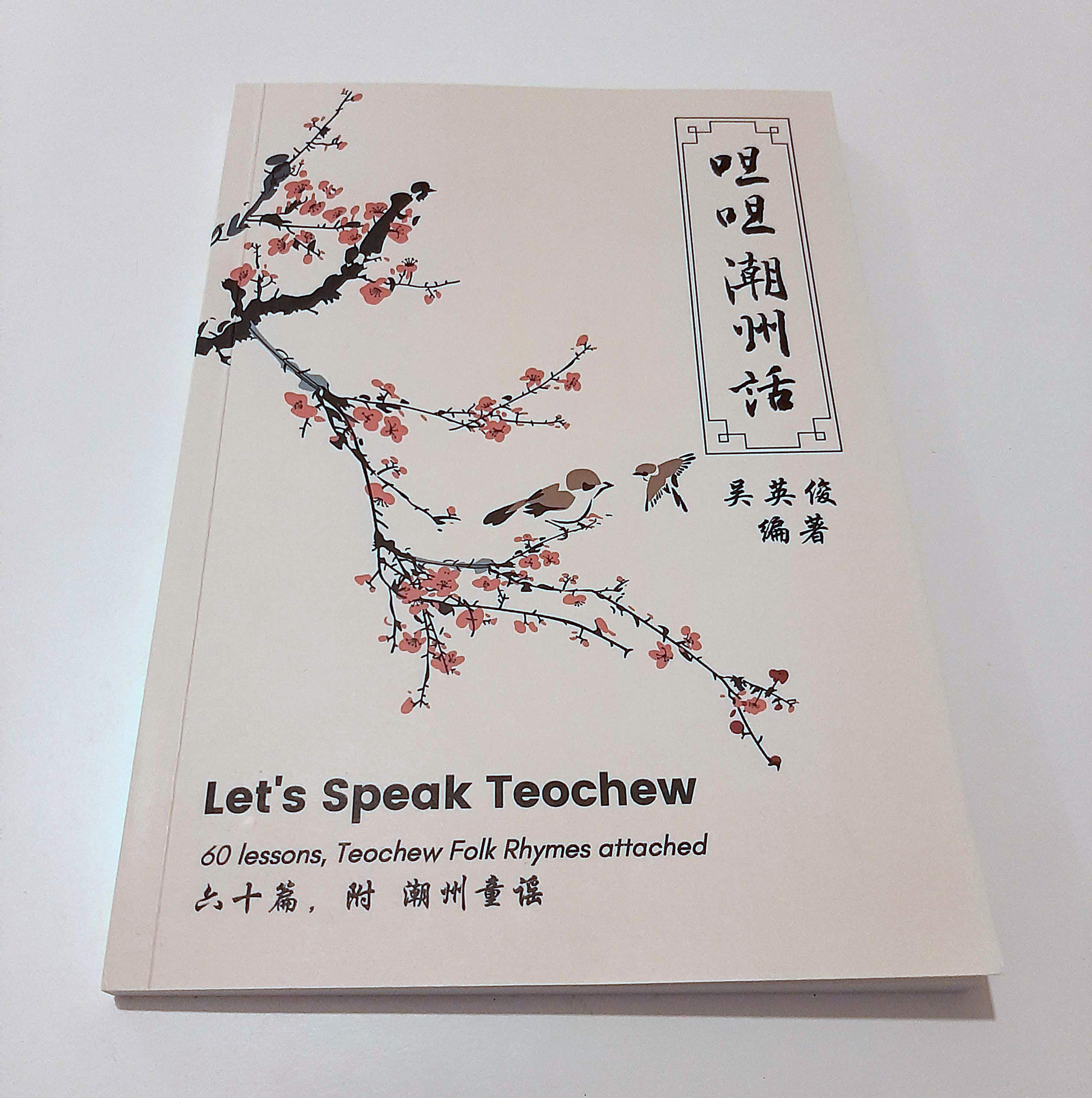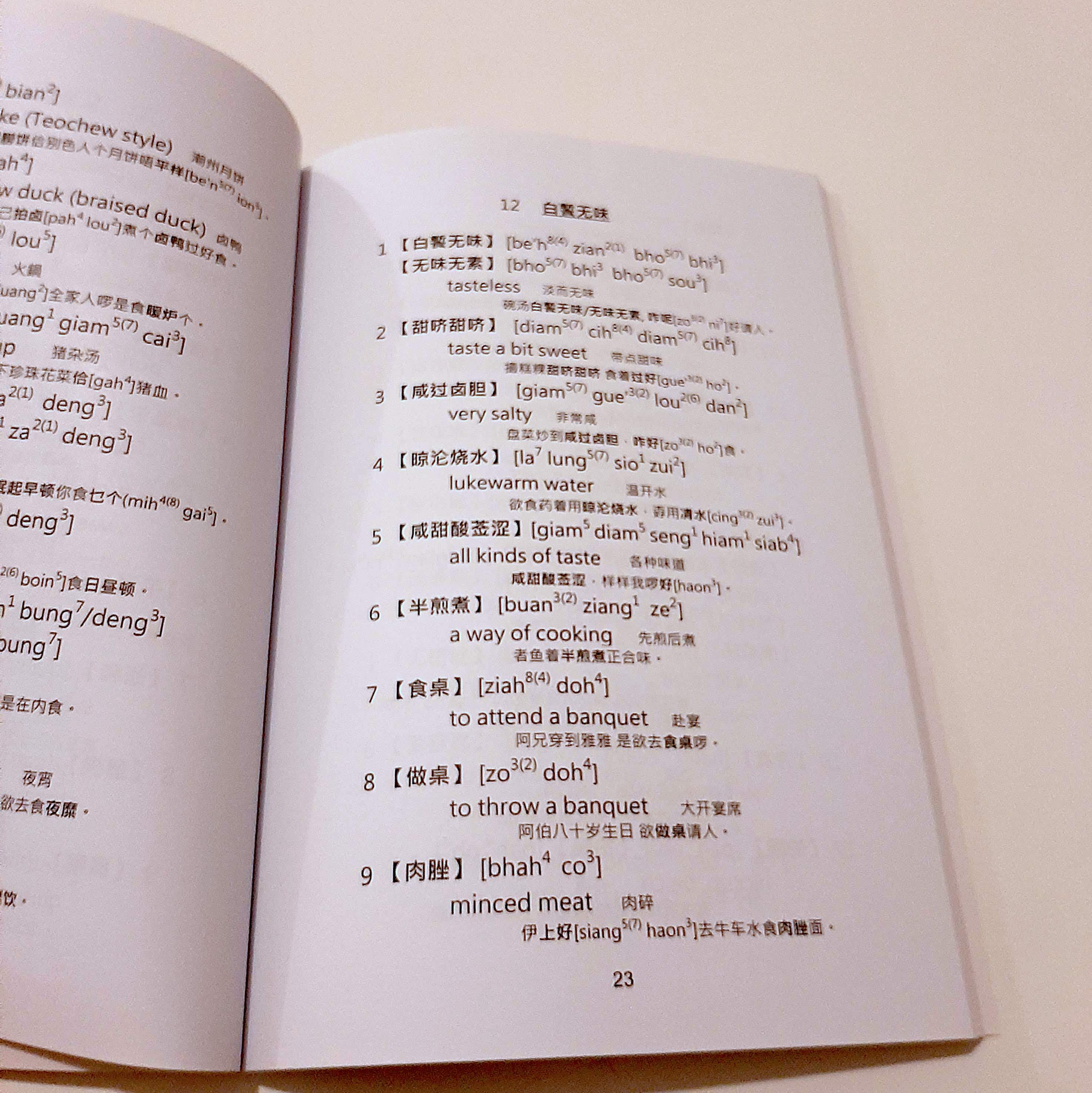Book Review - Let’s Speak Teochew
Goh Eng Choon 吴英俊 (2018) 《呾呾潮州话》 Let’s Speak Teochew : 60 lessons, Teochew Folk Rhymes attached. Singapore. ISBN 9789811182297


This book is organized into 60 chapters, each of which has vocabulary grouped under a theme, such as 亲情 cing1zian5 (“relatives” – kinship terms) and 唔三唔四 m6san1m6si3 (“behave shadily, indecent” - terms used to describe different types of shady characters). The chapters are short, each two pages long with about 15 to 20 vocabulary terms. Each item is given in Chinese characters and standard Guangdong Teochew Peng’im, with both citation and sandhi tones, along with a definition in both English and Mandarin as well as an example sentence.
At the end of the book are ten Teochew nursery rhymes or folk rhymes, in both characters and full Peng’im. An overview of the Teochew Peng’im scheme is also provided as an appendix.
The author of this book has also compiled a dictionary of Singapore Teochew, titled Colloquial Teochew 《潮州口语集释》, originally published in 2017, with a new edition released in 2020. The items in Let’s Speak Teochew have been extracted from Colloquial Teochew, which has over seven thousand entries. The thematic organization of Let’s Speak Teochew makes it more interesting for learners, and ideally the two books would be used together.
What I like about this book is that the vocabulary items are mostly colloquial terms, many of which are unique to Teochew, instead of formal language or vocabulary terms that usually have a direct equivalent in Mandarin. This is the language as it is actually spoken in daily life, instead of the bookish language of newsreaders or announcers, and so is useful for people who want to learn Teochew to communicate with their relatives or seniors. It is also more lively and authentic to the ear. The example sentences help in understanding how the words are actually used, and also help learners with picking up grammar passively.
Because the book uses the standard Teochew Peng’im, readers will be able to move on to other modern Teochew publications and dictionaries more easily. This also ensures that the pronunciation is accurately and consistently represented. Unfortunately this is not always the case for books aimed at teaching Chinese dialects to heritage speakers: some books published in recent years, mostly picture books of vocabulary terms for children, use their own ad hoc phonetic spellings which are not adequate.
The one shortcoming of this book is that the example sentences are only in Chinese characters, with only occasional “difficult” words annotated with Peng’im. Beginners, who are the target audience for this book, would not be familiar with reading Teochew in characters. This would be a hindrance for them, even with a dictionary to look up the characters, which itself is time-consuming.
Let’s Speak Teochew is on sale for SGD 15 at the Maha Yu Yi bookstore at the Bras Basah Complex in Singapore, as well as other local bookstores. For overseas customers, the online Teochew Store offers delivery. Readers in Singapore can find copies at most branches of the National Library
Posted on 2021-01-07 00:00:00 +0000